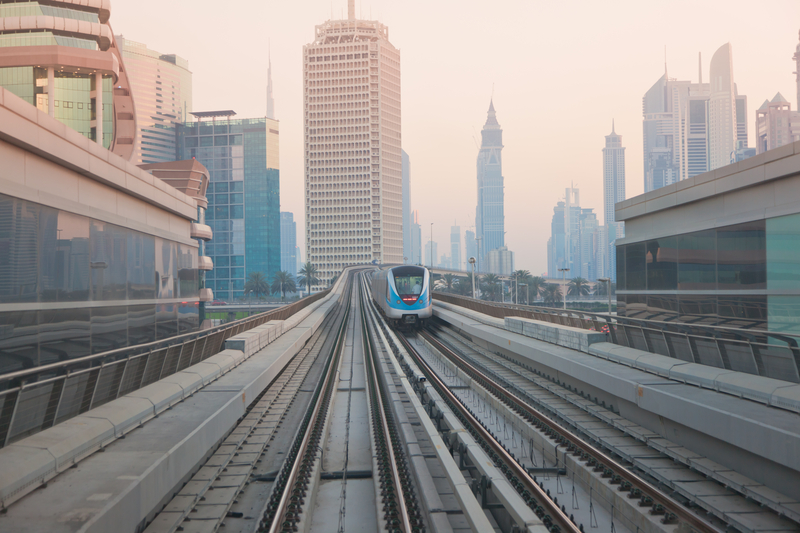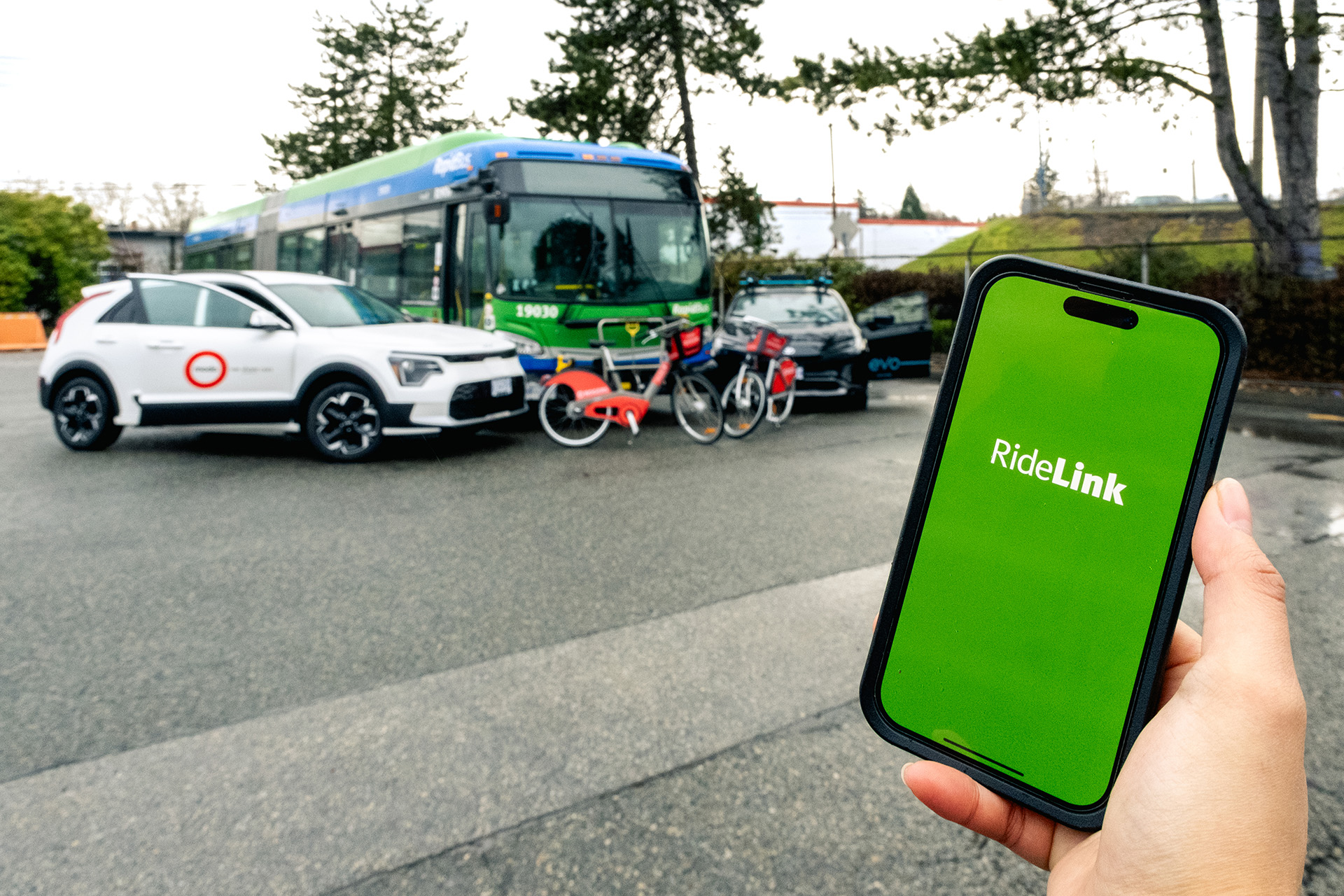
Some ITS International readers might find this hard to believe but just using public transport can be a pleasure in itself, regardless of whether you are trying to get somewhere. “When I use the public transport in Venice, I feel like I am on a sightseeing tour!” says Mohamed Mezghani. “And you also have some emblematic public transport systems, like the New York subway, for example, or the red buses in the centre of London; you like being in this kind of system.”
As you might have already gathered, Mezghani loves mass transit - and this is part of the reason why he has just started his second, elected, five-year term as secretary general of UITP, the International Association of Public Transport. “I like travelling in a city which just implemented a new public transport system or a new line, you know, because it changes completely your perception of the city,” he continues with enthusiasm. “And when you do that, you realise all the benefits that public transport can bring, you see that these benefits are really that tangible.”
Using the Dubai Metro and the Casablanca Tramway for the first time are happy memories for this reason. “These are cities where there was almost no real public transport system,” he recalls. “Public transport is my passion so I feel a kind of pride when I see what it can bring to the city.” Both are continuing to develop public transport, too, he points out. Even the notoriously car-centric Dubai is recognising the appeal. “It is becoming the backbone in those cities,” Mezghani says happily.
It's unlikely that public transport has a more committed champion, and Mezghani is looking ahead with confidence: from 2025, UITP will begin holding its Global Public Transport Summit every year (rather than every two), one year in Europe and one outside. “What I say to our members now is if you have to travel once per year, go to the summit,” he laughs. “So 2024 is the year of transition where we define the way we work from now on.”

Redefining the transport ecosystem
Mezghani is a UITP veteran. With dual Tunisian and French nationality, he graduated with a degree in industrial engineering from Ecole Nationale d’Ingénieurs de Tunis in Tunisia, and has a master in transport from Ecole Nationale des Ponts et Chaussées in Paris.
A lot has changed about public transportation since he finished studying in the late 1980s.
“One main change is the perception of public transport,” he says. “Before - and it's still the case in some countries - it was seen like the mobility solution for those who have no choice; for poor people [who] don't have any other alternative, and they were forced to use public transport.”
Not any more, he thinks. “Now we see that public transport has many more implications, more benefits for cities, for the environment, for the economy. It’s not just a way to go from A to B: we see that public transport is a game changer for cities. And this is, I think, one very important change compared to when I started 30 years ago or more. And also now we see the role of public transport in the decarbonisation of mobility.”
UITP has been participating in the annual Cop series of climate conferences since 2011. “I see how the discussions around public transport have taken a new dimension - recognising public transport as a way to fight climate change, as part of the solution,” he says.
One of Mezghani’s aims when he took over the top job at UITP was to redefine the idea of the public transport ecosystem, to include modes such as shared e-scooters or bikes.
"Public transport was seen like the mobility solution for those who have no choice"
“Public transport is not just limited to mass transit, [it goes] beyond that, embracing on-demand and shared mobility solutions,” he suggests. “One of the challenges we have is that we need to reduce the weight of cars, of traffic congestion, in our cities. So we need to find a solution to that. Mass transit alone cannot answer all the mobility needs – we need to combine it with shared and on-demand mobility.” In other words, public transport is “not just from station to station, but from door to door”. It is with this in mind that UITP has created a new shared mobility division. “It’s important that we look at mobility from the perspective of the travellers and not from the perspective of an operator or an authority or an industry supplier, and then develop the system with the best offer for that.”
There are challenges here, of course – between public and private players, the sharing of data, how to develop ticketing. Mobility as a Service will be vital, he thinks. “I know that three years ago there was hype about MaaS,” he says. “Now it is a little bit, you know… silent, I would say! We thought initially that MaaS is just a technology issue - but then we discovered that it's a governance issue. The tool is easy to develop - but then how to define all these interactions between the different players? That is key. So now we are taking time to think about that more. I'm confident it will come.”
He is at pains to point out that – although he gave up his own car four years ago – he is not anti-car. He lives in a suburban Paris, with good public transport, and he knows this is not everyone’s experience. “And I don’t have small kids I need to drive around,” he smiles. “Maybe I appear as someone presenting cars as enemies to public transport, but it’s not that. I think we should approach it differently: neither cars nor public transport can satisfy mobility needs separately. We need both of them. But it's important to use each of them in a rational and in an efficient way.”
In France, he says, 25% of all car trips are less than 1km, and 60% are less than 3km. “So there is room for us to be using bikes, using public transport – and not using carbon. There are people who don't even question: they take their car every day – every day - even to go and buy some bread at the bakery 1km away from home. So it's important that we think about the optimal use of each.”
There is also the question of the road space required for individual car journeys. “Public transport, of course, is much more efficient in the number of people it can move on a reduced space, so we need to take this into consideration. Then we can talk about CO2 emissions, energy consumption, road safety, etc. There are benefits for each mode. Extreme behaviours are not good, either for public transport or for the car. So it's important that we use the right mode at the right place.”

Getting transport right with integrated authorities
When it comes to public transport, Mezghani has travelled just about everywhere. The places that get it right tend to be those which have an integrated authority covering all modes, bringing together ticketing and traveller information. “People don't care who is operating [transport] but they want a smooth, seamless transfer from one mode to the other, where public transport is a real alternative to cars,” he says.
Switzerland, the Scandinavian countries and the Netherlands spring to his mind, followed by a stream of names: London, Barcelona, Berlin, Vienna, Budapest, Prague, Milan, Moscow, New York, Brussels. Also some Asian cities, especially in China (“incredible”, he says), and Singapore.
“These are cities where it is easy to move with public transport. We need to make public transport easy to use: that's the key. For me, there are two ‘holy lands’ of public transport: Singapore and Switzerland,” he grins.
"There are two 'holy lands' of public transport: Singapore and Switzerland"
Mezghani worked with the French Agency for Environment and Energy Management at the start of his career, evaluating transport energy efficiency projects. Where does he see the relationship between transport and energy now? “We need transport and energy in all sectors of the economy,” he says. They rely on one another and “transport is also the sector which is seeing its contribution to CO2 emissions growing the fastest in the world”.
The urban mobility dimension is huge, he says. “It's important that we reduce the impact of transport on CO2 emissions, and that we have a structured approach to that. The problem is the complexity of the transport sector, because it is governed at international level, at national level, at regional and local level.” In Europe, some regulation is even defined by the European Commission at supranational level, yet is applied at the local.
“So this is the complexity: in France we have a cake called mille-feuille, where you have layers of cream,” he muses. “If you have an integrated transport offering, covering all modes, it makes things a little bit easier, and there is less conflict between the different layers.”

Global challenges
Outside of decarbonisation, there are several other challenges for the public transport sector. Staff shortages is a global problem, he says. “We need to make public transport a stronger ‘employer’s brand’, you know, to attract people because we compete with other sectors, of course.”
Digitalisation’s impact on public transport is another issue, as is the business model of the sector as a whole. “The costs are growing, and not just because of inflation,” he explains. “It is also because of electrification and digitalisation, because we want a better service for people. And at the same time we see that there is an appetite from politicians who would like to have low-fare or even free public transport. We need to work on that to increase awareness with policymakers that this is not the right approach - because when you ask people why they don't use public transport, they will never tell you it’s because they have to pay; they will tell you it’s because it's not available. So we need to work on the quality, on the availability – but not on reducing fares. Or if we reduce fares it’s only for those who need it, but not for everyone.”
“[On public transport] if you want to dream you can dream - in your car, you can’t do that”
The final problem is a big one: the relative lack of women in the industry. Mezghani is on the board of Femmes en Mouvement, which promotes women in mobility, and last year UITP voted in the first female president in the association’s 138-year history. Renée Amilcar, general manager of OC Transpo in Ottawa, Canada, is looking at “how to grow the gender balance”.
To go back to a subject that is never far away: one of the arguments in favour of travelling by car is that you are in your own ‘bubble’. But Mezghani – unsurprisingly - is not convinced. “In public transport, you can also create your own bubble,” he insists. “That's the one of the benefits: you can have your headset, you can listen to your own music, you don't even hear what is happening around you - but at the same time, you are in a permanent interaction with people. But if you want to sleep you can sleep, if you want to read you can read, if you want to dream you can dream - in your car, you can’t do that.”
Even he acknowledges it is not always perfect. “Of course, there are some days where it's very crowded, but generally speaking, the experience is very positive. I mean, in your car it is every day where it is congested, not only some days,” Mezghani concludes. “ I think you have more days of very bad experience with your car than with public transport.”












